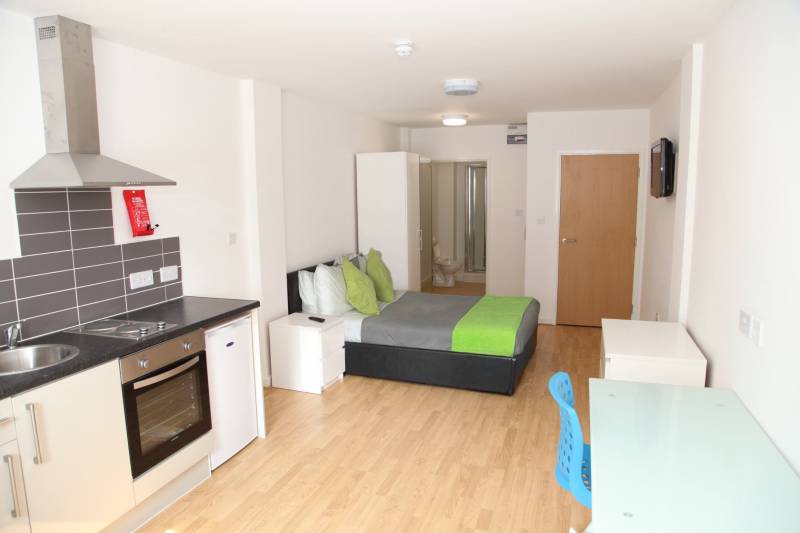Studio flat
A studio flat is a self-contained habitable space in which the living room, bedroom and kitchen facilities are all incorporated into one space, sometimes with partial walls or other forms of divider used to separate the different areas.
A bedroom may be positioned in one corner, while a small kitchen (or kitchenette) may be in another corner, with the space between them allocated as the ‘living room’. The bathroom facilities are typically contained in a smaller room within the flat.
Depending on the building complex, studio flats may also include storage spaces, fold-away beds, garden areas, balconies, and so on. According to London’s planning guidance, the minimum size recommended for a studio flat, is 37 sq. m.
A one-bedroom flat (often referred to as a ‘single flat’ or ‘bedsit’), has separate spaces for the bedroom, living room, and kitchen areas instead of a single multi-purpose room. The similarity between a one-bedroom flat and a studio flat is the separate bathroom space.
In terms of the market, studio flats tend to be targeted at young professionals, graduates and new renters who wish to live in a relatively central urban location at a more affordable rate.
Even smaller micro flats, of as little as 13 sq. m are offered for student accommodation, and as an affordable-rent solution for dense areas of cities such as central London
[edit] Related articles on Designing Buildings
Featured articles and news
Government consultations for the summer of 2025
A year of Labour, past and present consultations on the environment, the built environment, training and tax.
CMA competitiveness probe of major housing developers
100 million affordable housing contributions committed with further consultation published.
Homes England supports Greencore Homes
42 new build affordable sustainable homes in Oxfordshire.
Zero carbon social housing: unlocking brownfield potential
Seven ZEDpod strategies for brownfield housing success.
CIOB report; a blueprint for SDGs and the built environment
Pairing the Sustainable Development Goals with projects.
Types, tests, standards and fires relating to external cladding
Brief descriptions with an extensive list of fires for review.
Latest Build UK Building Safety Regime explainer published
Key elements in one short, now updated document.
UKGBC launch the UK Climate Resilience Roadmap
First guidance of its kind on direct climate impacts for the built environment and how it can adapt.
CLC Health, Safety and Wellbeing Strategy 2025
Launched by the Minister for Industry to look at fatalities on site, improving mental health and other issues.
One of the most impressive Victorian architects. Book review.
Common Assessment Standard now with building safety
New CAS update now includes mandatory building safety questions.
RTPI leader to become new CIOB Chief Executive Officer
Dr Victoria Hills MRTPI, FICE to take over after Caroline Gumble’s departure.
Social and affordable housing, a long term plan for delivery
The “Delivering a Decade of Renewal for Social and Affordable Housing” strategy sets out future path.
A change to adoptive architecture
Effects of global weather warming on architectural detailing, material choice and human interaction.
The proposed publicly owned and backed subsidiary of Homes England, to facilitate new homes.
How big is the problem and what can we do to mitigate the effects?
Overheating guidance and tools for building designers
A number of cool guides to help with the heat.
The UK's Modern Industrial Strategy: A 10 year plan
Previous consultation criticism, current key elements and general support with some persisting reservations.
Building Safety Regulator reforms
New roles, new staff and a new fast track service pave the way for a single construction regulator.

























